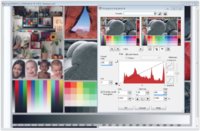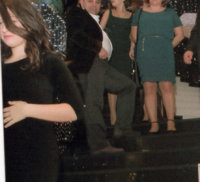- Thread starter
- #11
MichaelKnight
Getting Fingers Dirty
- Joined
- Feb 5, 2018
- Messages
- 47
- Reaction score
- 13
- Points
- 46
- Printer Model
- Epson L3060
Thanks for your answer.
We purchased that photo(together with some other photos) as jpeg files in a cd.So the first image is the original jpeg file, but I used some cropping and sizing.
I printed the second photo from the unmodified original jpeg file(without cropping,sizing etc.)
Then I scanned the photo from photo paper.Then I did some cropping and sizing on the file.
Based on my observation, the second photo I showed has more problems than the printed photo on the paper has in reality.White balance(if I understand it right) of the photo on the photo paper(Epson Premium Glossy) , is better than it seems in the second photo I sent.So it didn't scan very good with the settings I used.
But blacks are really not blacks like you said, and it is actually what I see when I looked at the photo on the photo paper under daylight.I feel like blakcs are greenish, sometimes I doubt but sometimes it looks so obvious.
I do some cropping and sizing, I don't change colors or other things, but I believe printer may be doing some corrections automatically(color correction is set on "auto" under printer settings)
I don't print images regularly but after I bought this printer a few weeks ago, I printed many photos(but only a few family photos, others are generally photos I found on internet, to test the printer).I noticed the problem of blacks in some other photos, for example in one photo there was a black mask(with some shine) on a woman and when I look at that photo especially under daylight,I see gray and greenish tones more than black.On another photo, a man's jacket looks greenish although it shouldn't be,it should have black and some gray tones.In another photo, again I saw problem with another man's jacket, again greenish although it should be black and should have a little whiteness.In another photo I saw some blue-ishness in the background although it should be yellow.In another photo, a man's black jacket was looking like very dark blue but not black.
I am planning to print the picture you suggested, in a few minutes.
you purchased picture 1 , as a copy, on paper 4x6" whatever by a party photographer
and did you get the image file, the .jpg file as well with this deal ?
And you printed that .jpeg file yourself which got that bad as you show above.
Or did you scan that 1st image to duplicate by printing it another time ?
And then scanning this print again to show how bad it looks ?
I'm jsut trying to understand how many copy/print/scan activities that image went through ending up like this.
We purchased that photo(together with some other photos) as jpeg files in a cd.So the first image is the original jpeg file, but I used some cropping and sizing.
I printed the second photo from the unmodified original jpeg file(without cropping,sizing etc.)
Then I scanned the photo from photo paper.Then I did some cropping and sizing on the file.
Based on my observation, the second photo I showed has more problems than the printed photo on the paper has in reality.White balance(if I understand it right) of the photo on the photo paper(Epson Premium Glossy) , is better than it seems in the second photo I sent.So it didn't scan very good with the settings I used.
But blacks are really not blacks like you said, and it is actually what I see when I looked at the photo on the photo paper under daylight.I feel like blakcs are greenish, sometimes I doubt but sometimes it looks so obvious.
Are you printing private images regularly ? And how do they get ? Which inks are you using - those which camewith the printer ? Are you using any photo editor to do something with your images - cropping, sizing, levelling the
horizon, changing colors or any other fancy stuff ?
I think we need to identify and separate possible causes - an issue with printer/driver/color settings or with the
scanner - white balance , color adjustments and black level during or after scanning.
I do some cropping and sizing, I don't change colors or other things, but I believe printer may be doing some corrections automatically(color correction is set on "auto" under printer settings)
I don't print images regularly but after I bought this printer a few weeks ago, I printed many photos(but only a few family photos, others are generally photos I found on internet, to test the printer).I noticed the problem of blacks in some other photos, for example in one photo there was a black mask(with some shine) on a woman and when I look at that photo especially under daylight,I see gray and greenish tones more than black.On another photo, a man's jacket looks greenish although it shouldn't be,it should have black and some gray tones.In another photo, again I saw problem with another man's jacket, again greenish although it should be black and should have a little whiteness.In another photo I saw some blue-ishness in the background although it should be yellow.In another photo, a man's black jacket was looking like very dark blue but not black.
I am planning to print the picture you suggested, in a few minutes.
Last edited:


